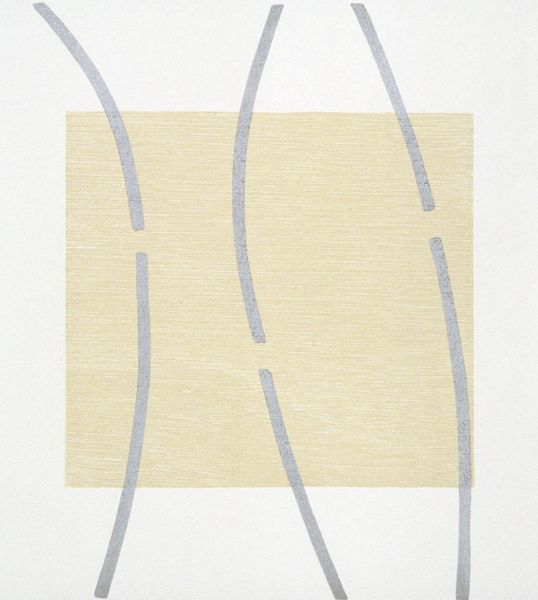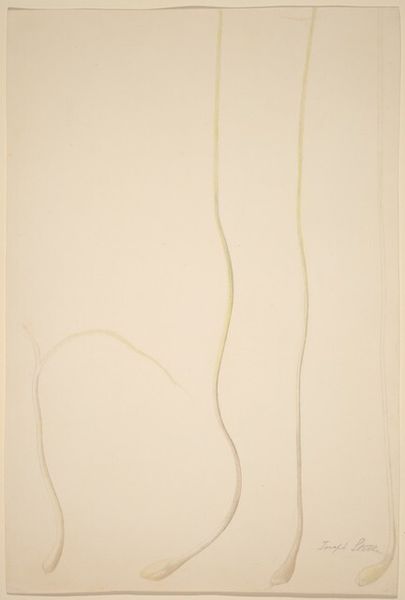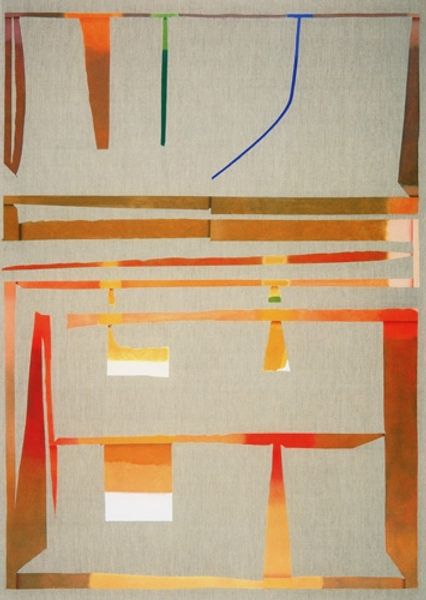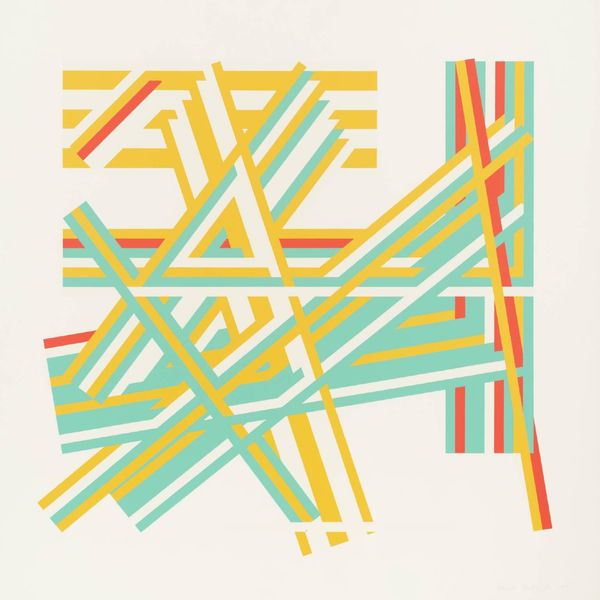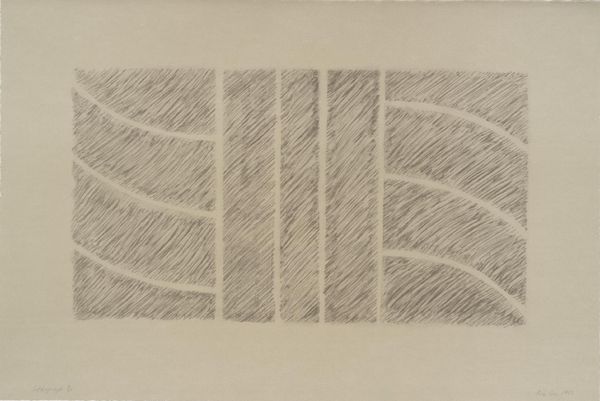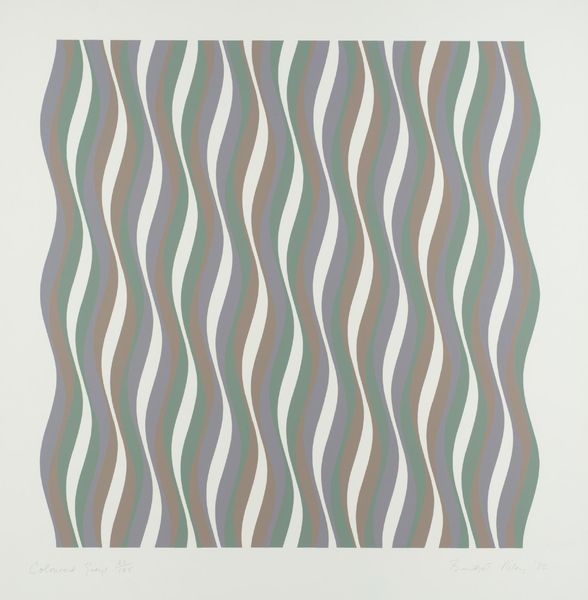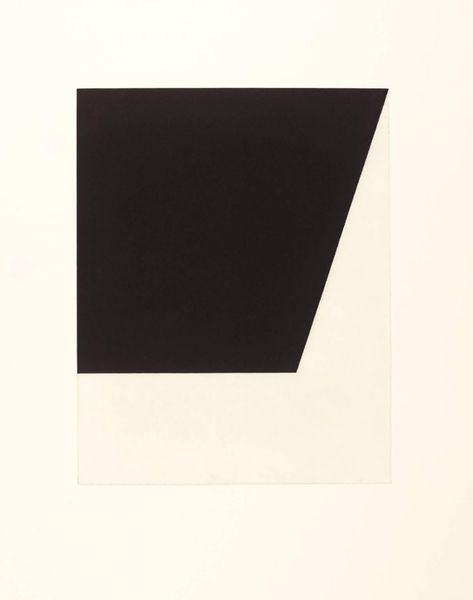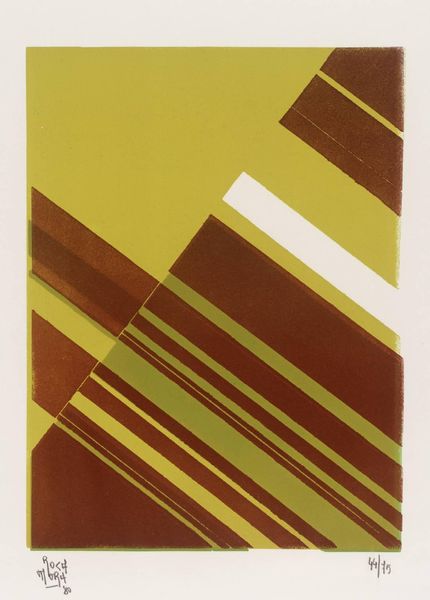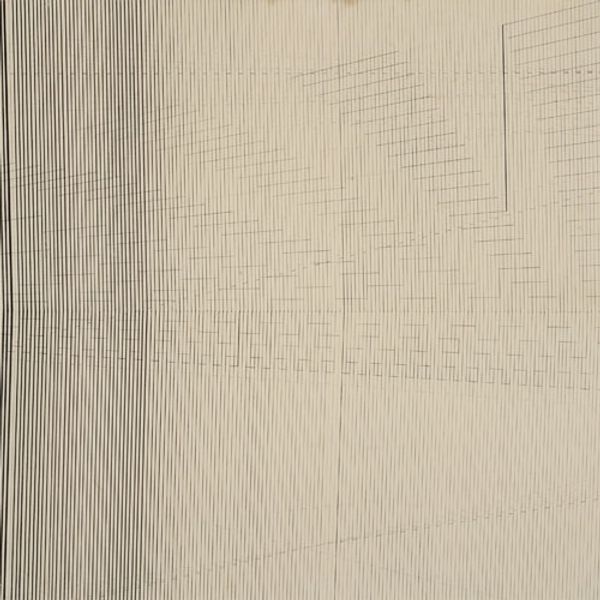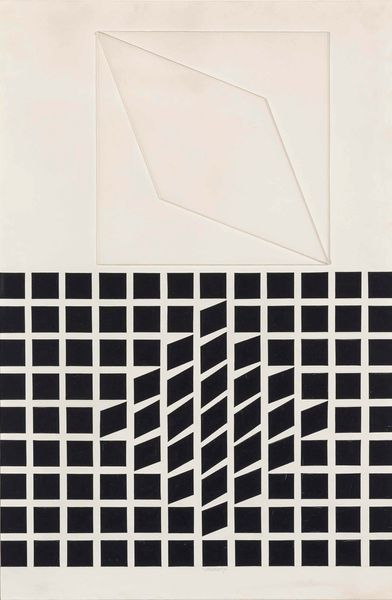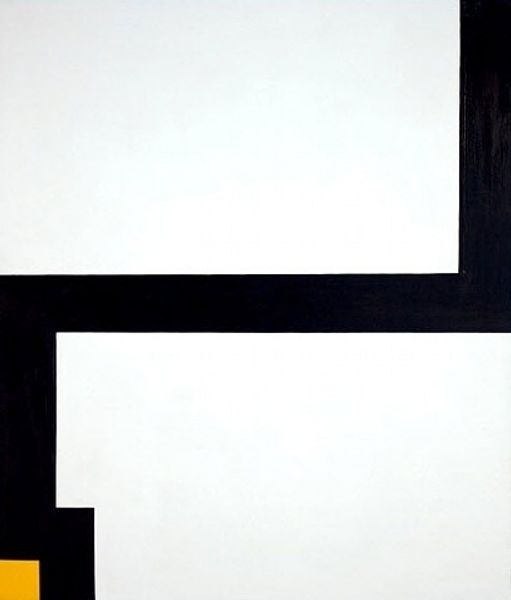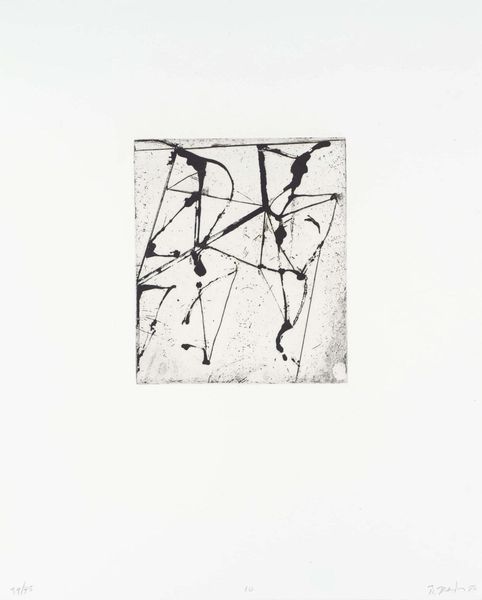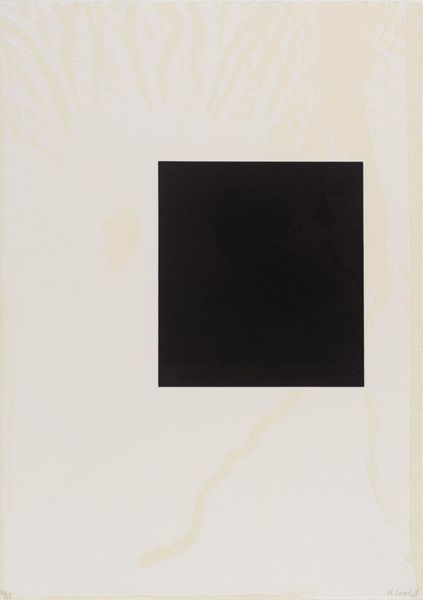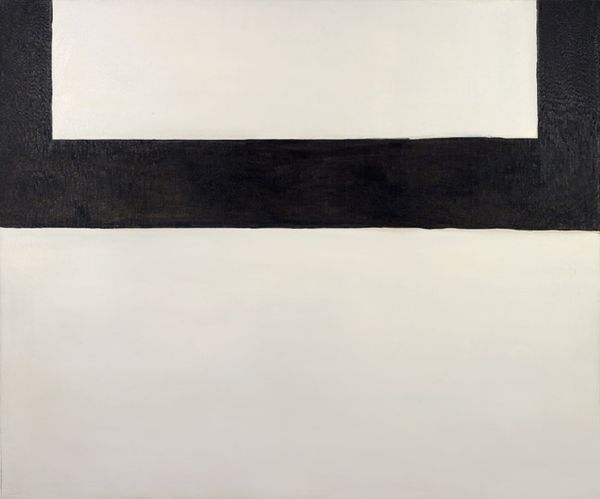
Dimensions: image: 359 x 325 mm
Copyright: © Estate of Kim Lim. All Rights Reserved, DACS 2014 | CC-BY-NC-ND 4.0 DEED, Photo: Tate
Editor: So, here we have Kim Lim's "V" from the Tate collection. I'm really drawn to its subtle color palette and minimalist design. What do you see in this piece? Curator: Well, it speaks to a broader movement in art history, where artists sought to create universal languages through geometric abstraction. Lim’s work, in particular, reflects post-war desires for clarity and order, a visual antidote to chaos. How might the gallery setting impact our understanding of this piece? Editor: That's fascinating! I guess seeing it in the Tate, alongside other modern works, positions it within that historical dialogue. I hadn't considered that. Curator: Precisely! The museum itself acts as a filter, shaping how we perceive the work. It also makes me wonder about the politics of displaying abstract art. Editor: This has given me a lot to think about concerning the museum's role in shaping our understanding. Thanks!
Comments
Join the conversation
Join millions of artists and users on Artera today and experience the ultimate creative platform.
tate 8 months ago
⋮
Kim Lim was born in Singapore but trained as an artist in London, where she subsequently spent her life. She was known primarily as a sculptor in wood and marble, but also made a number of prints and drawings. This group of woodcuts was purchased in 1999. A further ten prints were donated by the Contemporary Art Society in memory of Cecily Lowenthal, who was a long serving member of the Tate Guides and a close friend of the artist. Lim had a life-long fascination with the art and philosophies of the East. Her work reflects this interest in its quest for simplicity and in her attempt to distil the essence of natural forms. Gallery label, August 2004
